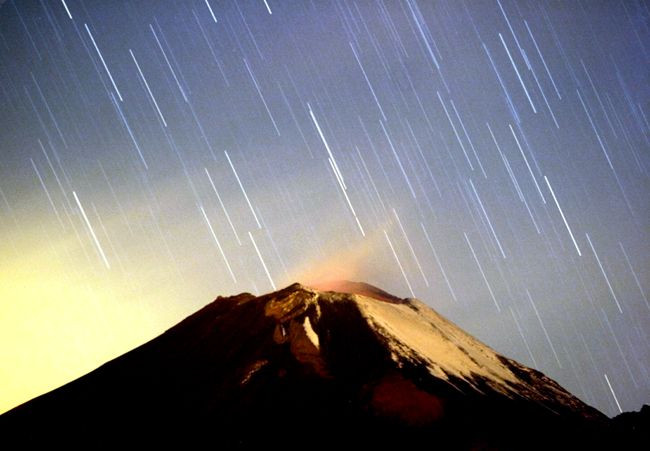
Good news: before the world ends, we're all in for one hell of a light show. Often referred to as the best meteor shower of the year, the Geminid shower is fast approaching Dec. 13.
"Of all the debris streams Earth passes through every year, the Geminids' is by far the most massive," NASA astronomer Bill Cooke said. "When we add up the amount of dust in the Geminid stream, it outweighs other streams by factors of 5 to 500."
On the night of Dec. 13, 2012, the Geminid meteor shower will be peaking right around 8p.m. EST, though the best time to watch for them is always around 2a.m. local time, when their radiant point will be passing very nearly overhead, according to Space.com. The higher a shower's radiant, the more meteors it produces all over the sky, says the site.
NASA reports that the Geminids are a relatively young meteor shower, with the first sightings occurring in the 1830s with rates of about 20 per hour.
Over the decades the rates have increased, regularly spawning between 80 and 120 per hour at its peak on a clear evening.
Those in Europe and North Africa east to central Russia and China are in the best position to catch the very crest of the shower, when the rates conceivably could exceed 120 meteors per hour. The Geminid meteor shower is named after the constellation Gemini, which is located in roughly the same point of the night sky where the Geminid meteor shower appears to originate.
Last year's Geminid shower seriously compromised by bright moonlight when a glowing gibbous moon came up over the horizon during the late evening hours and washed-out many of the fainter Geminid streaks with its bright light. But this year promises to be one of the most spectacular displays in recent memory. Coinciding with a new moon, this year's shower promises to be even more eye-popping than normal. This means no moon will be visible during the shower, making the sky especially dark and black, and creating perfect viewing conditions for the shower.
"Indeed, under normal conditions on the night of maximum activity, with ideal dark-sky conditions, at least 60 to 120 Geminid meteors can be expected to burst across the sky every hour on average (light pollution greatly cuts the numbers of visible meteors down significantly)," said Space.com.
"The Geminid Meteors are usually the most satisfying of all the annual showers, even surpassing the famous Perseids of August," noted Space.com.
"Studies of past displays show that this shower has a reputation for being rich both in slow, bright, graceful meteors and fireballs as well as faint meteors, with relatively fewer objects of medium brightness. Geminids typically encounter Earth at 22 miles per second (35 kilometers per second), roughly half the speed of a Leonid meteor. Many appear yellowish in hue. Some even appear to travel jagged or divided paths," the site added.
Geminids are unique among other meteor showers, as scientists believe they were spawned not by a comet, but by "3200 Phaethon," an Earth-crossing asteroid.
Although, as Space.com points out, it's still possible that the meteors came from comets, noting, "the Geminids may be comet debris after all, for some astronomers consider Phaeton to really be the dead nucleus of a burned-out comet that somehow got trapped into an unusually tight orbit. "
© 2025 Latin Times. All rights reserved. Do not reproduce without permission.




